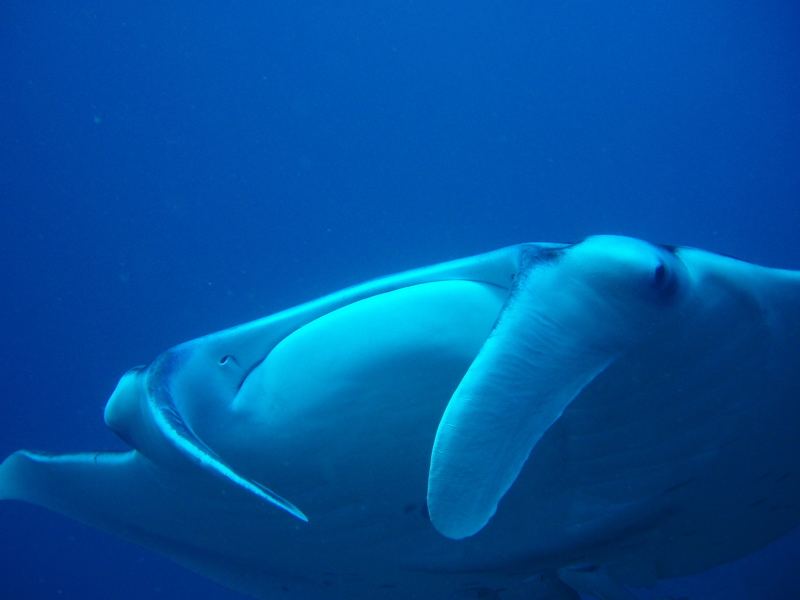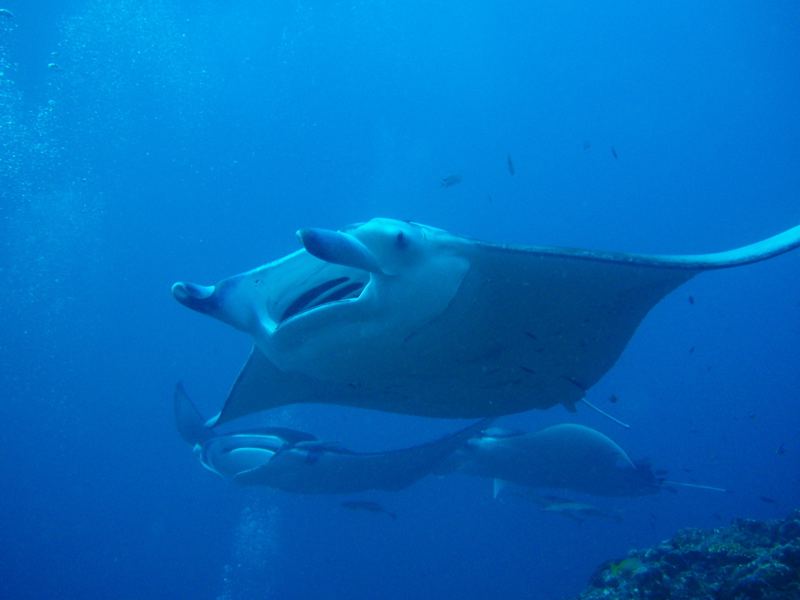
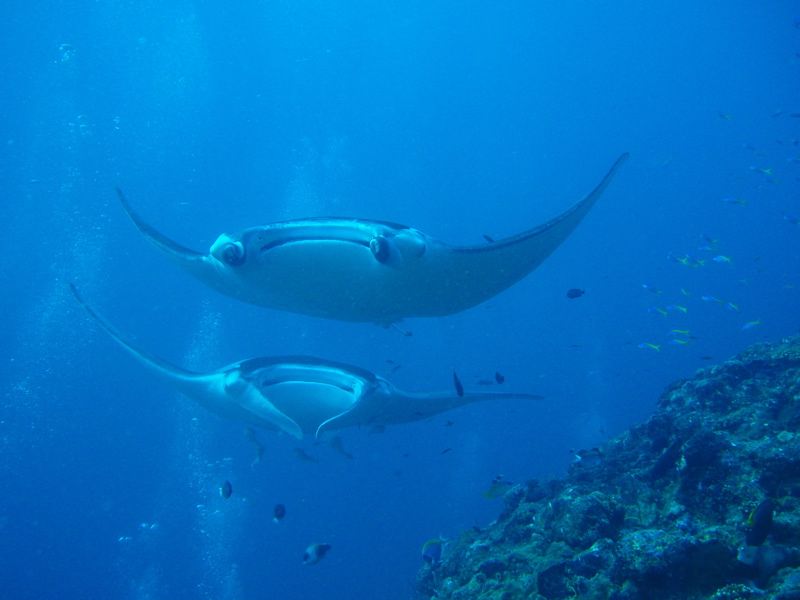


This is a brief description of a diving trip to the Maldives. For experienced travelers to the Maldives it does not contain anything new for sure. But maybe it is useful for divers who are traveling to the Maldives for the first time. All underwater photographs shown here were taken during this trip by divers who were on the boat (I myself did not take any underwater photographs).
The same report is also available in
![]()
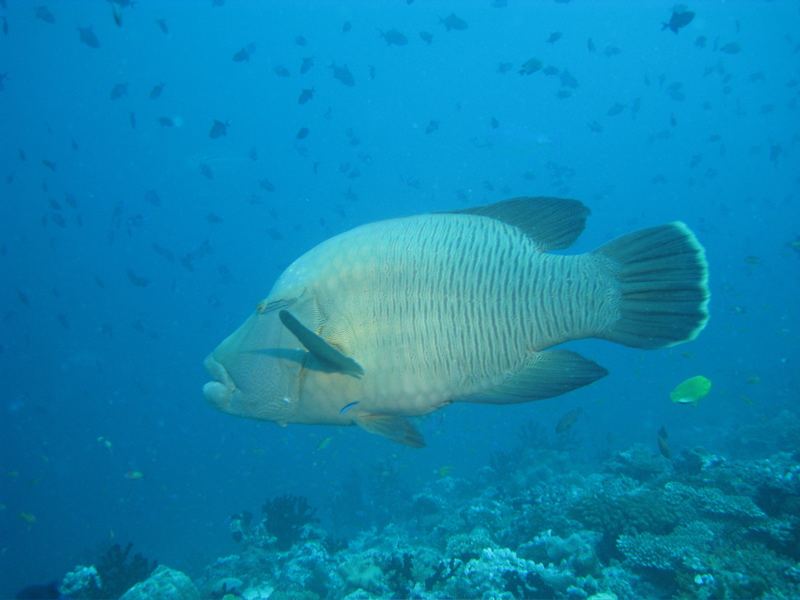

The trip occurred in the last week of November of 2008. The November is a time of transition between the Southwest and the Northeast monsoon. During this time the weather often changes. And this we also experienced with occasional heavy rains and strong winds.
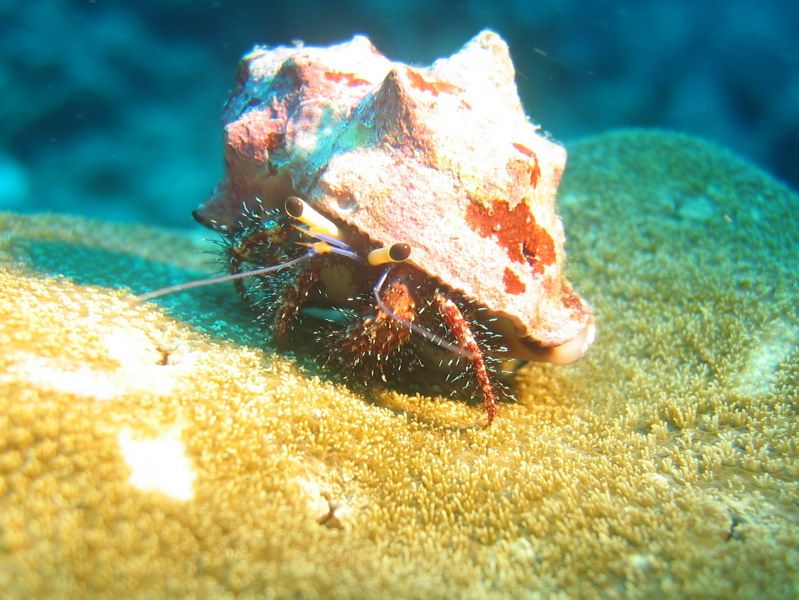
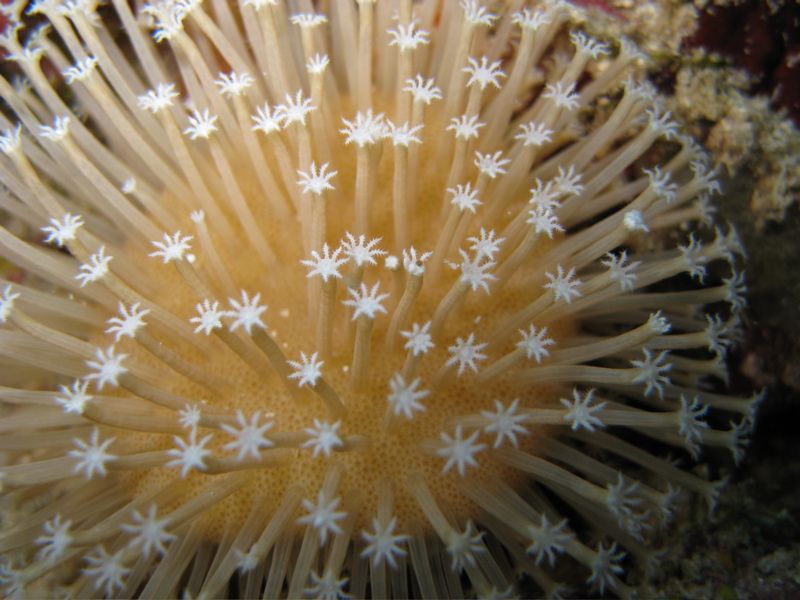
During this week I stayed on a boat together with the rest of the group. This trip had been chartered through Maldives Live-Aboards. The diving trip itself started and ended on a Sunday, which is quite common. The first dive, a check-dive, already occurred on the first Sunday. The last dive occurred on Saturday morning before breakfast - at least for those guests who did not have to fly already on Saturday. As a result, we had a maximum of 17 dives (of which one is a night dive); but as one standard dive had to be cancelled due to rough seas, a second night dive was offered.
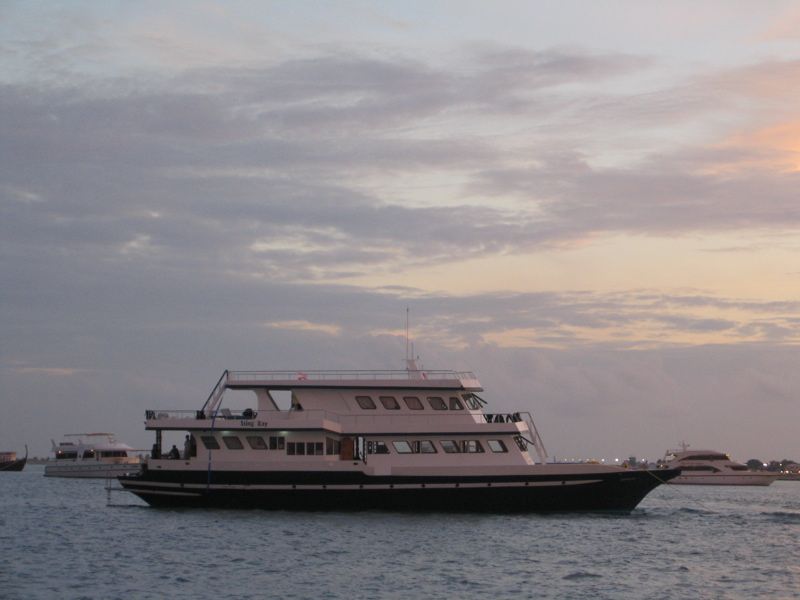
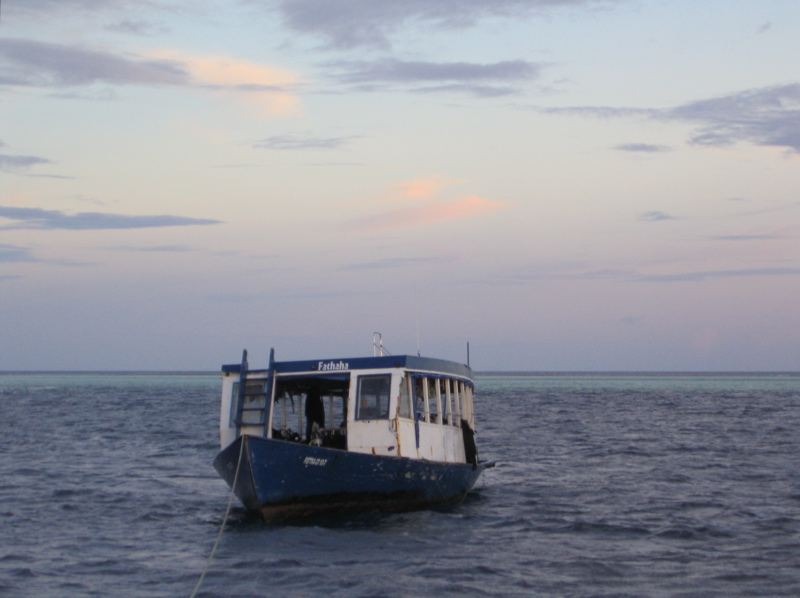
The dives are not done from the boat on which we stayed. Rather this is done from a so-called dhoani. Originally, this name described fishing boats. These are now refitted for diving or specially built for diving. Already on the first day a tank is assigned to each person, and one attaches jacket and regulator. And thus they stay throughout the week. The compressor is connected to long hoses. The crew takes care that the tanks get filled right after the dives.

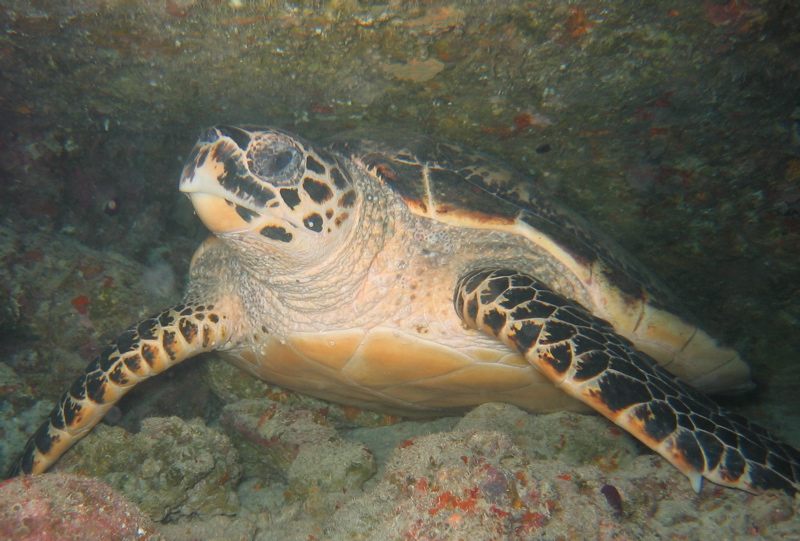
The big advantage of diving from a dhoani is that that the main boat, on which one stays, can remain in a protected bay, while one takes the dhoani to the often exposed dive sites. Because this sites are so exposed, it is recommendable to put on the diving suite as soon as one has changed to the dhoani. If one waits with putting on the dive suites till after the dhoani has left the protected bay, then putting on the suite can become quite uncomfortable.

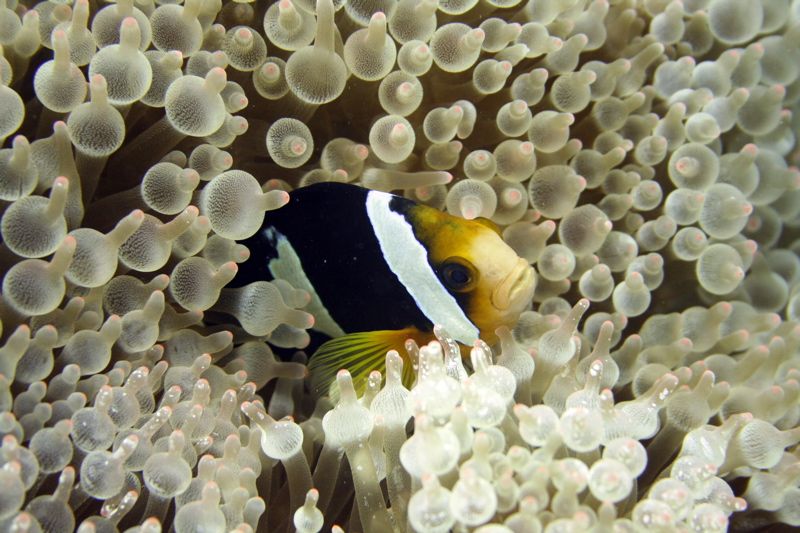
As mentioned before, the dive sites are often exposed. Strong currents are frequent. And for that reason it is obligatory to bring a buoy along with the dives. These should be connected to a rope at least 5 meters long, so that one can inflate the buoy already while on the safety stop. No experience in setting a buoy? No problem. Diving on the Maldives provides with plenty of opportunity to practice this. For often the safety stop has to be done in deep water, while the current carries the diver out into the open sea. In such a situation it is an advantage to set the buoy as early as possible, such that the crew on the dhoani can spot the diver in time. And one should have no illusions: without a bright-red buoy it is almost impossible to spot a diver in the open sea.
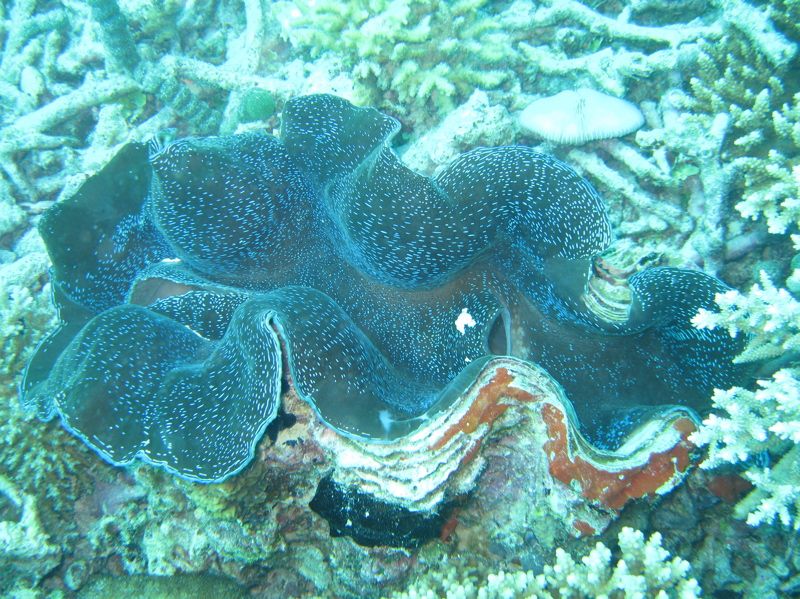

Determining the direction of the current is one of the main tasks of the dive guides. Thus one can see them jumping into the water only with fins early on in order to determine the direction of the current. And it is quite frequent that the current comes exactly from the opposite direction as expected. For the many atolls, shallow waters, and canals make it very difficult to predict the current. One can determine the quality of a good guide by whether he lets the divers jump into the water on the right spot. And our guide never disappointed us there.
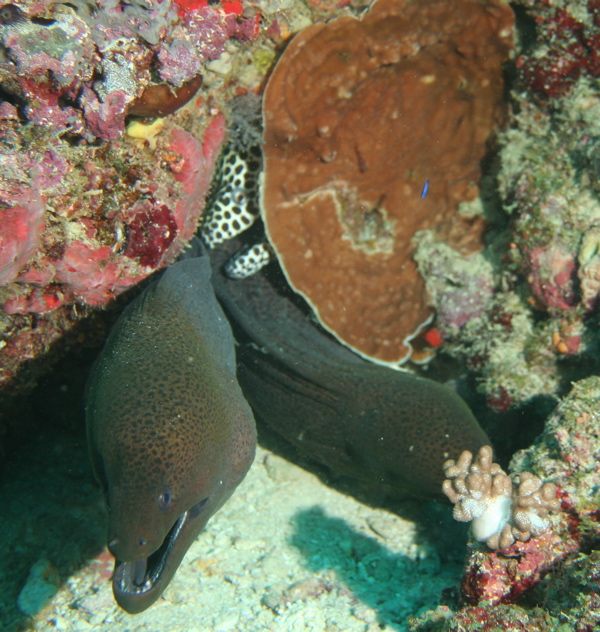
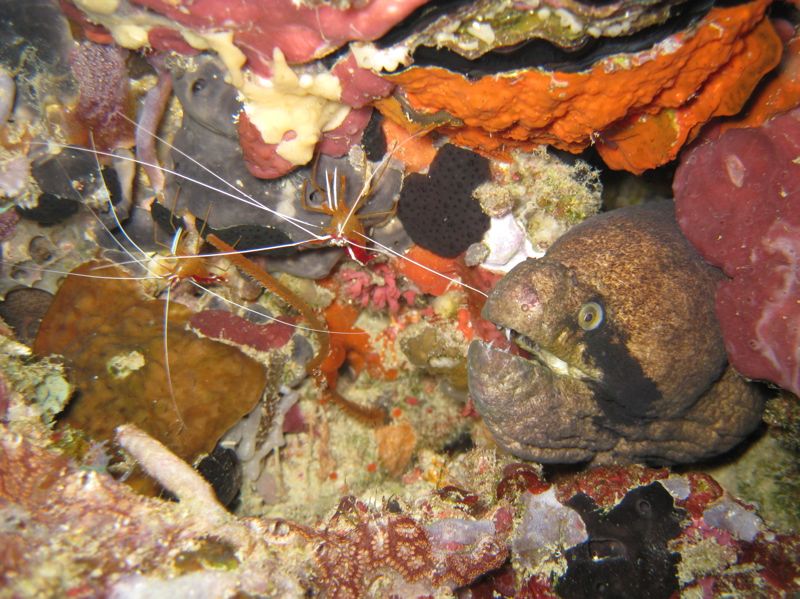
The dhoani never throws an anchor. At most a rope is tied to the reef, for example, during the night dive. It must be part of the measures passed some years ago for protection of the reef. The dhoani then circles and follows the bubbles of the divers. When getting back on the dhoani one has to be careful. Especially one should let every diver get out of the water completely before the next diver starts up the ladder. If the first diver were to loose his grip and fall back into the water, the consequences could be dire for the diver behind.
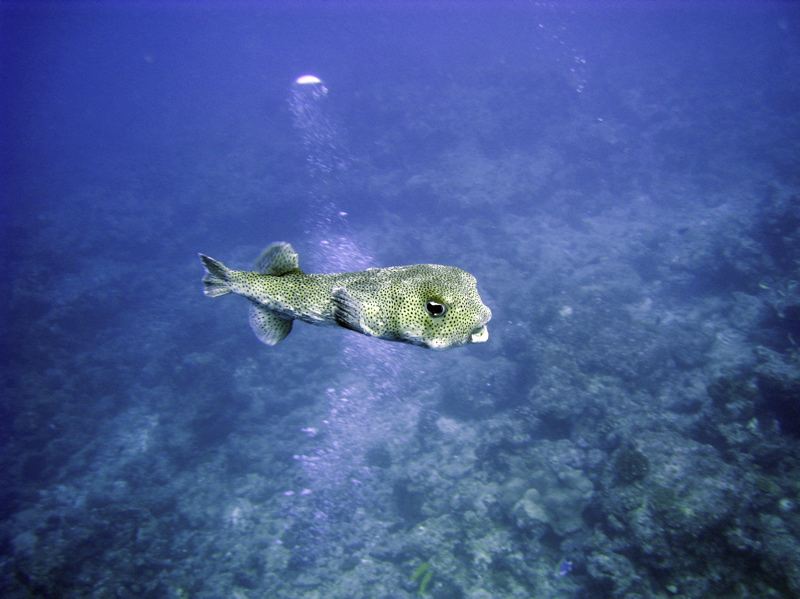
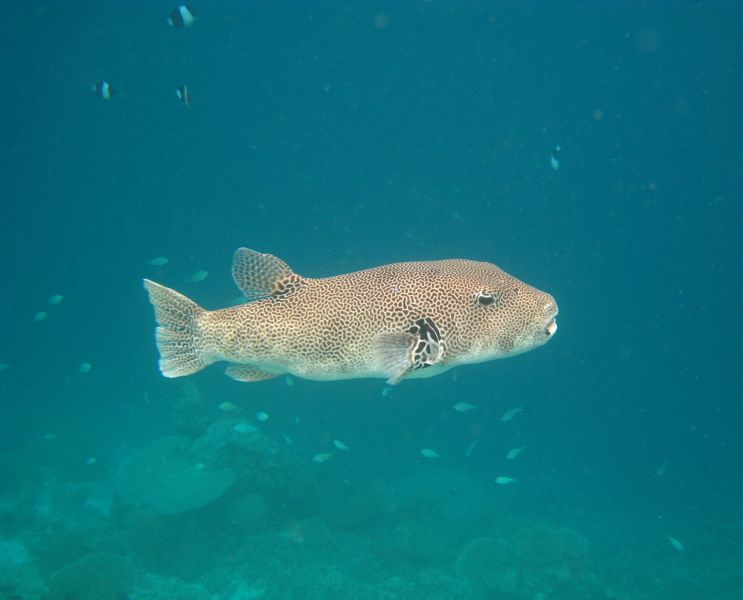
Once we had to cancel a dive because of strong waves. Another time we had to switch to another dive site. Of course, these are no easy decisions for a dive guide, when 18 divers are all ready to jump into the water. For that reason, high respect is due to the dive guide for such a professional decision.
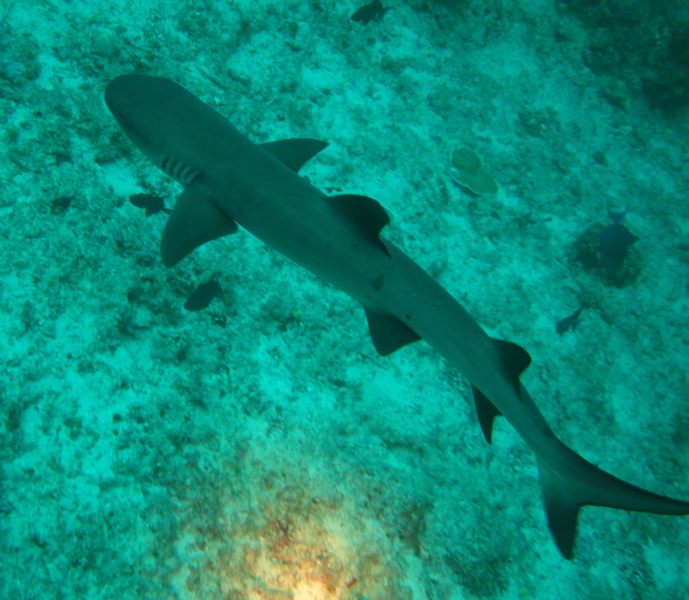

The dives are always done in buddy teams. It is up to these buddy teams to decide whether they want to follow the guide or whether they want to dive independently. At least the more experienced divers are free to go on their own. The dives take about 50 to 60 minutes. And out of respect for the other divers one should not dive any longer. The night dive is limited to 40 minutes, and one should respect this as well. For if one is carried away by the current, then one needs the light of the lamp to be spotted by the crew (the recommendation for such a case is to inflate the buoy and hold the lamp inside the buoy).

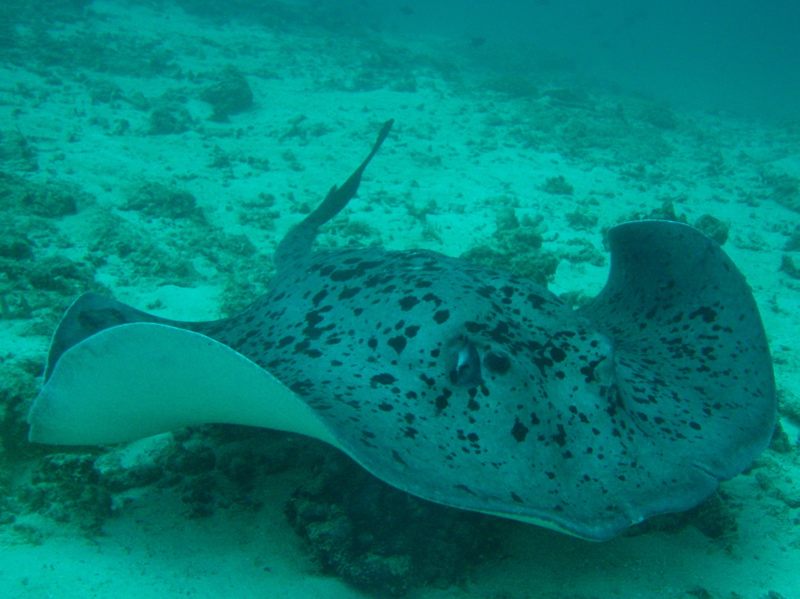
The maximum diving depth is 30 minutes, and one should also not end up in a deco stop. Nevertheless, the crew did not check our diving computers.
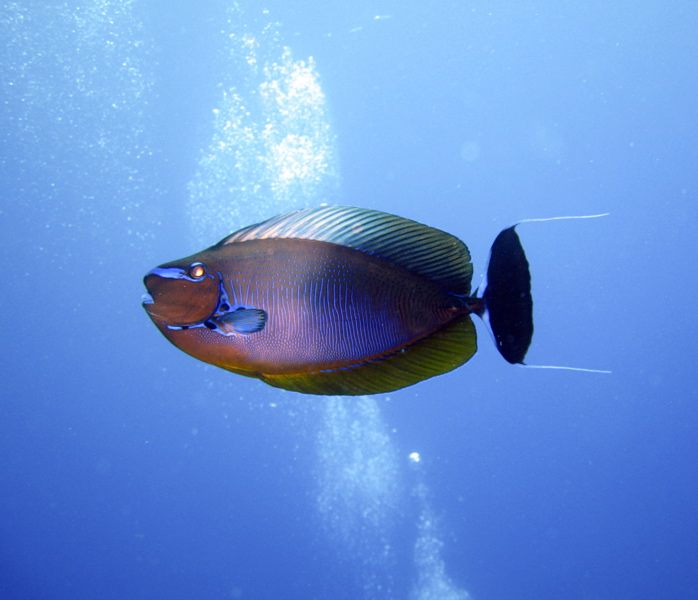
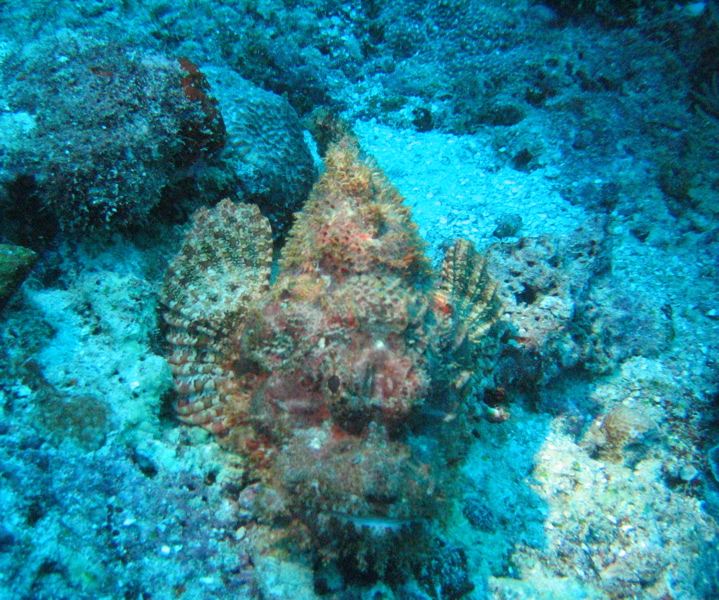
The briefings for the dives contain all information. And the drawings on the white board were accurate. However, at the beginning the flow of information (for example, the precise start of a dive) was not perfect. But after some feedback this improved significantly.
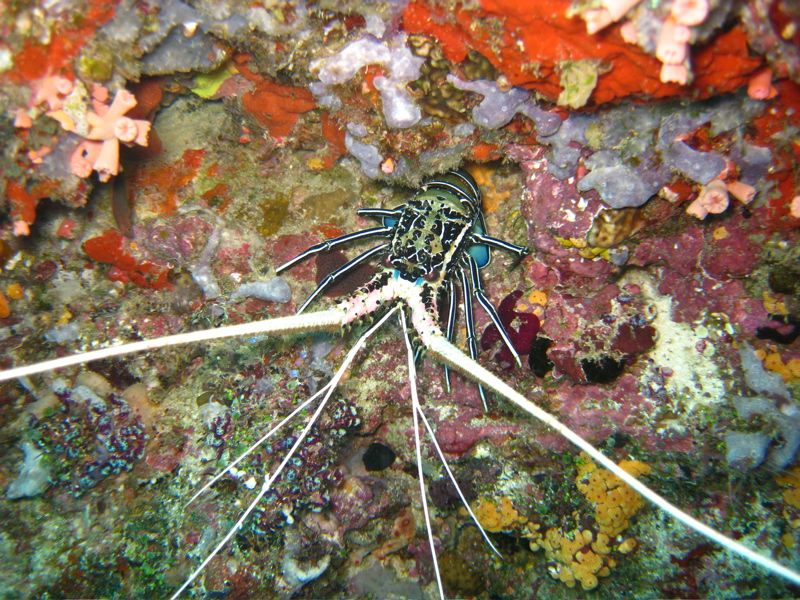
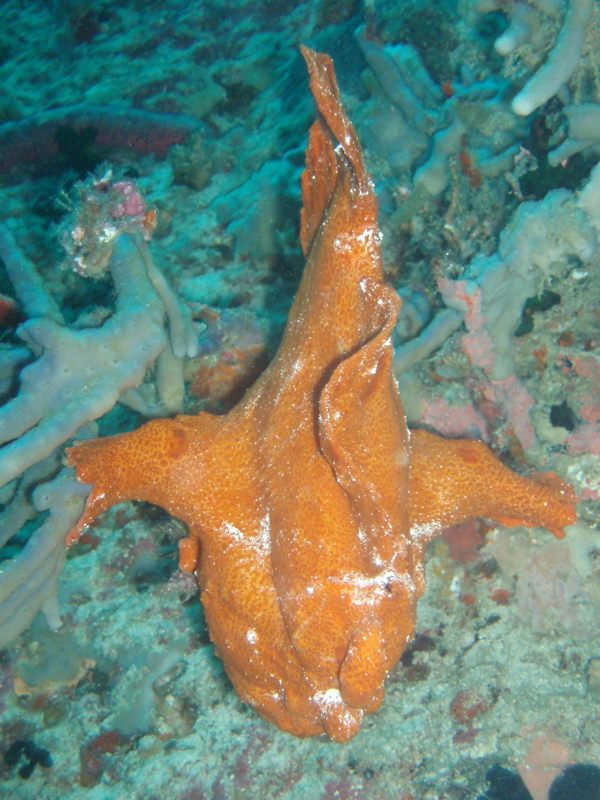
And now, let's describe what we saw during the dives. It was great. Beautiful gorgonian, black corrals, and overgrown rock overhangs. We saw a lot of sharks (whitetip reefshak, gray reefshark). During a night dive at one time we had four on a spot, which used the light of our lamps for hunting. An attempt at seeing hammerhead shark failed however (this was a dive into the blue; we were warned that we would either sea hammerheads or plankton; in our case it was plankton). But we were lucky with the manta rays. Three at the same time we we saw at a cleaning station. Turtles we also saw more than enough. We also got to sea eagle rays and stingrays (some of them were very large). And of course there were the groupers, moray eels, octopus, lionfish, and all the other tropical fish that one expects to see in a healthy reef. A good start for identifying see animals is Starfish.
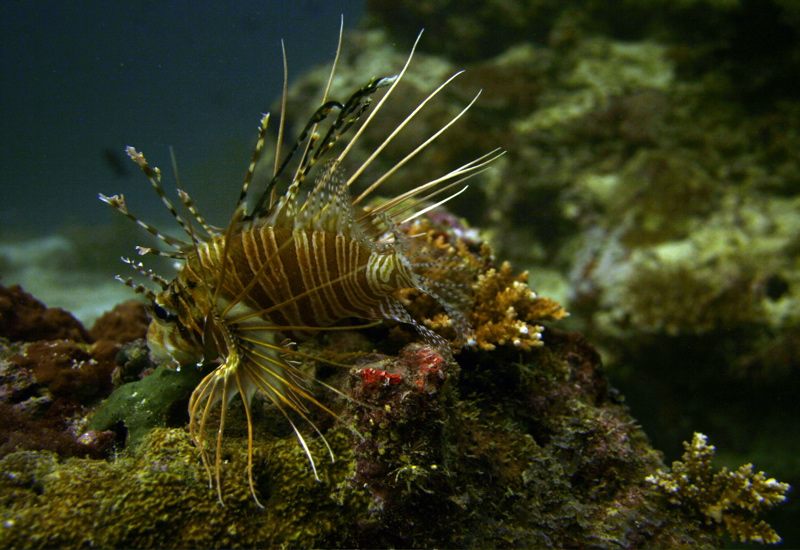
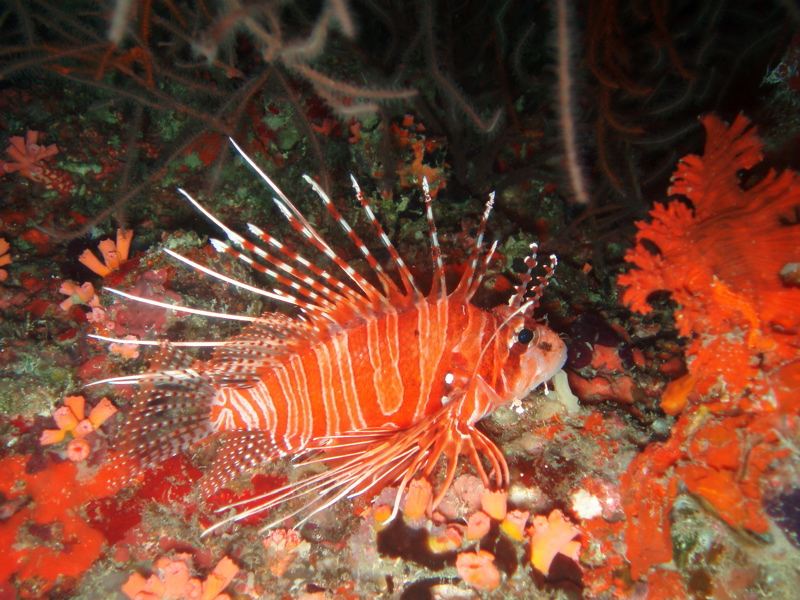
On the Maldives one can pay in US dollar anywhere. And in Male the stores often (but not always) have change in US dollar. The Maldives are a strict muslim country. And for that reason, alcohol is not served with the exception of resorts. Thus, there one can have a beer in the evening (for us it cost $ 3 per 0.3 liter Carlsberg). But it is important not to exceed the alcohol consumption. It is obvious that the first beer ends the diving on a given day. And as the first dive often happens at 6 in the morning (and not later than 7 in the morning), one should not exaggerate the alcohol consumption in the evening (but with the group in which I travelled that was no issue at all).
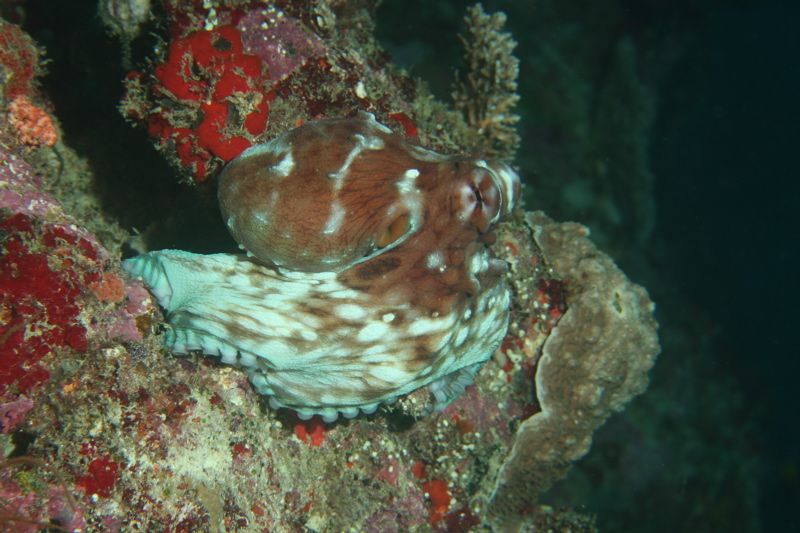
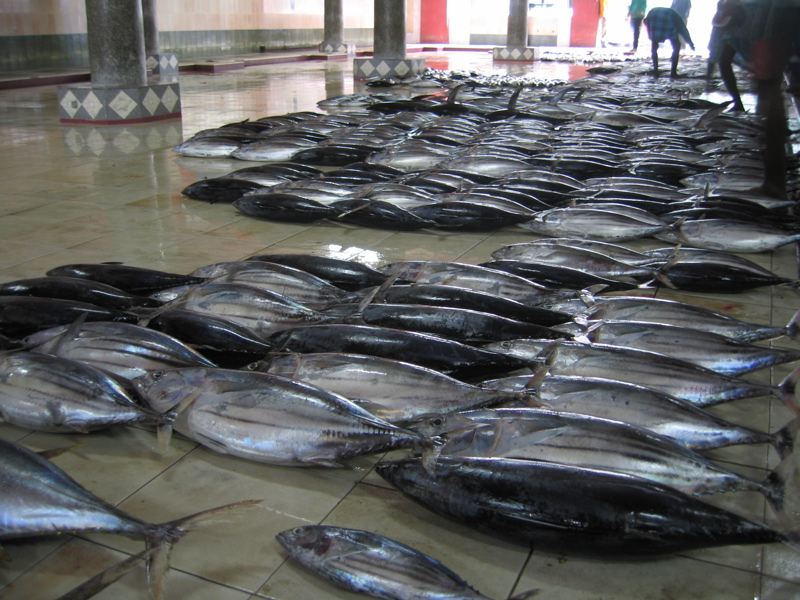
Finally, there exists as ever the topic of how much tip to give. The recommendation is $ 50. And at least this author was happy with the trip and saw no reason to be stingy. We all put the tip into one large envelope and gave it to the guides. It was up to them to distribute the money among the crew (and I presume that this was also done; for many of the crew the tip is an important source of income).
